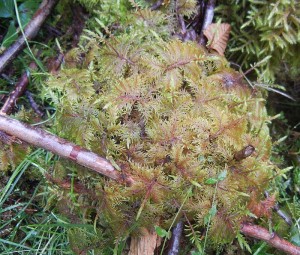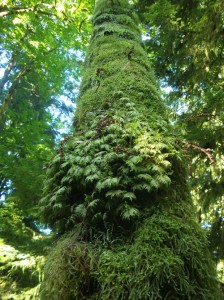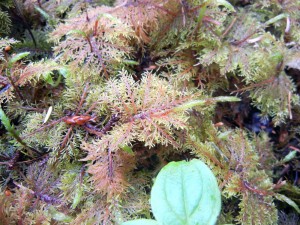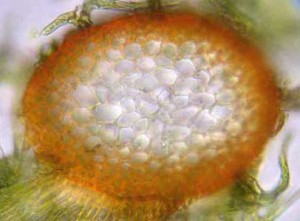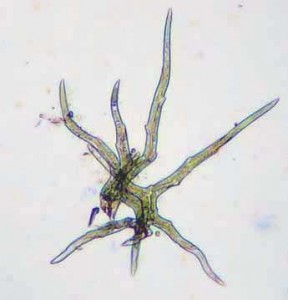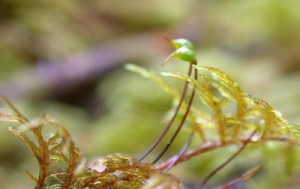Habitat
Hylocomium splendens, commonly known as “Step-moss” can be found in a variety of habitats on diverse substrata, such as decaying logs in the forest, the forest floor itself, cliff shelves and tree trunks.
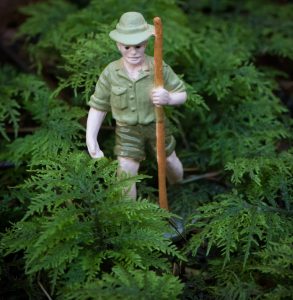
Gametophyte
Overall Structure:
Hylocomium splendens exhibits a pleurocarpous growth form. The plants form loose wefts of arching shoots.
Shoots are glossy green or brown-green, with red-brown stems.
The branching pattern of Hylocomium splendens is complex. Plants are composed of one or more bi-pinnately branched “steps”, each “step” representing a year’s growth. Thus, it is possible to estimate the minimum age of a plant by counting back the number of “steps” present in a sample.
Leaf Structure:
The leaves of the main branch are double-costate. The apices are elongate and sinuouse. The leaf cells are elongate. The costa is multistratose.
Stem:
The stem is composed of cortex of parenchymal cells surrounded by an outer red stereids surrounded by an epidermis. There is no central conducting strand. The stem has a compressed shape.
Surrounding the stem are structures known as paraphyllia. The paraphyllia in this species are abundant and easily recognizable due to their antler-like appearance.
Sporophyte
Sporophytes are occasionally present and mature in spring or summer.

